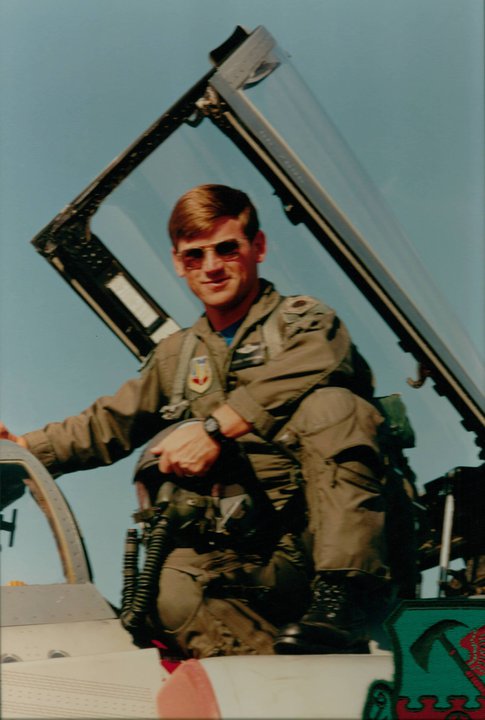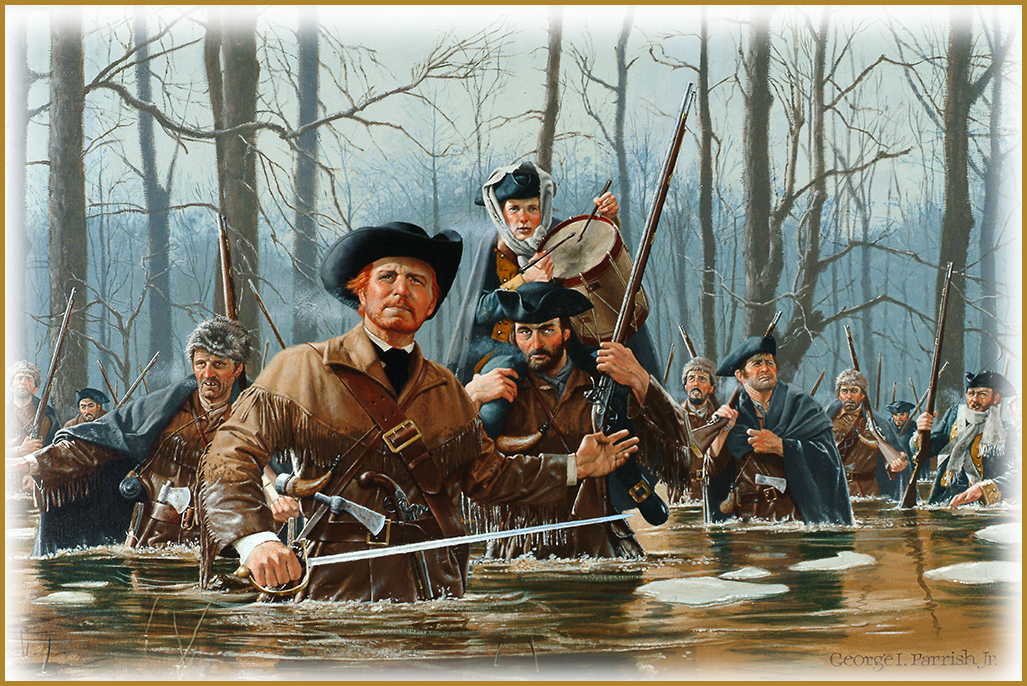Near the Capitol stands a building constructed to celebrate Illinois’ first 100 years of statehood. The Centennial Building (today called the Howlett Building) features an area for exhibiting battle flags of Illinois regiments from the Civil War and other conflicts. The flags have been removed to another facility to be better preserved, but the hall still includes displays marking the history of the Illinois National Guard.
Since its founding on this date in 1636, the National Guard has been a staple of the defense and public safety of this nation before there even was a nation.
The National Guard began when colonial Massachusetts’ leaders created a force of local soldiers under the command of the colony’s government. Other colonies followed suit and formed their own militias for local defense. Some of these formations evolved generations later into the Minutemen of 1775 and eventually became part of the Continental Army under George Washington.
The beginnings of the Illinois National Guard have their roots in a 1718 charter issued by the King of France who needed a local force to secure trading routes in the French-occupied Illinois Country.
The Howlett display begins in 1779, with a painting called Patriots of the Heartland. It depicts a group of Illinois militiamen who joined George Rogers Clark’s troops crossing the icy waters of an Illinois swamp on their way from Kaskaskia to capture the British garrison at Fort Sackville on the Wabash River.
After the revolution, Americans mindful of abuses by King George’s redcoats feared a standing national army. But a militia composed of local citizens was different, falling under the control of local officials rather than a far-off national government.
If war broke out, state militias would supply troops to fill the ranks of the tiny professional army maintained by Washington. When war with Mexico was declared in 1846 (over the objection of Congressman and former militiaman Abraham Lincoln) Illinois responded with six regiments.
Illinoisans secured a notable prize when Mexican leader Santa Ana fled the battlefield at Cerro Gordo, leaving behind his carriage, some treasure and his prosthetic leg, which currently resides in the Illinois State Military Museum in Springfield.
Days after Fort Sumter was fired upon in 1861 President Lincoln telegraphed northern governors requesting troops for a federal army to put down the rebellion. Illinois once again answered the call.
Most Illinoisans fought in the west, at places like Shiloh and Vicksburg. Some went east, including the Illinoisan who fired the first shot at Gettysburg. More than 250,000 Illinoisans were among Lincoln’s “Boys in Blue,” the third highest total of any state.
The Howlett display proudly notes that the first Union flag flown over the captured Confederate capital of Richmond was from an Illinois regiment.
The heroism of Illinois soldiers was on the mind of Charles H. Chamberlin when he composed the words to our state song, writing in the third verse:
When you heard your country calling, Illinois, Illinois
Where the shot and shell were falling, Illinois, Illinois
When the southern host withdrew, pitting gray against the blue
There were none more brave than you, Illinois, Illinois
There were none more brave than you, Illinois!
After the war soldiers returned to Illinois, but did not leave public service. A succession of governors for the rest of the 19th century were veterans, from up and down the ranks: Governor Richard Oglesby was a General, while Governor Joseph Fifer was an enlisted man who became a fierce advocate for veterans and was known as “Private Joe” during his campaign.

The tradition of Guard members continuing their public service extended into modern times. World War I Guard veteran John Stelle was governor in the early 1940s and World War II Guard veteran William G. Stratton served as governor for most of the 1950s. National Guard veterans continue to serve as legislators, including U.S. Senator Tammy Duckworth, and State Representatives Dan Caulkins, Wayne Rosenthal, Dan Swanson and Blaine Wilhour.
The first overseas Illinois National Guard deployment came in 1898 during the Spanish-American War. Prominent among those in the state’s service was poet Carl Sandburg, who enlisted in Company C of the 6th Illinois Infantry. He served in Cuba and Puerto Rico. Sandburg is visible in a photo of the company which is part of the Howlett display.
America’s entry into World War I coincided with a nationwide reorganization of the National Guard (including the formal nationwide adoption of the term “National Guard.”) The days of regiments with state-specific names like the “7th Illinois” came to an end. Many Illinois regiments were merged into a new 33rd Division and dispatched to Camp Logan, Texas for training.
The Howlett display depicts these Illinoisans undergoing training from an Army officer named Dwight D. Eisenhower. It also features Illinois soldier Robert McCormick who joined the Guard in 1915 before deploying to France. McCormick went on to become one of the most influential Illinoisans of the early 20th century as publisher of the Chicago Tribune.
The 33rd first saw combat in France on July 4, 1918. Corporal Thomas Pope earned a Medal of Honor – one of nine from Illinois during the conflict. When he died in Maywood in 1989 he was the last surviving Army Medal of Honor recipient from World War I. The 33rd played a key role in the war-winning Meuse-Argonne offensive against the Germans in southwest France; the largest battle ever fought by the U.S Army up to that time.
The Illinoisans began wearing a golden cross insignia on their sleeves, an emblem which would come to represent the 33rd Division. During World War I, the golden cross became the official insignia of the 33rd and is still worn by some Illinois National Guard members today.
When war clouds gathered again in 1941 Illinois guardsmen were deployed to the Philippines, arriving just before the Japanese invasion. The survivors of the fighting were captured and subjected to the horrors of the Bataan Death March.
Years later Illinoisans from the 33rd helped lead the way in returning to the Philippines. Soldiers of the 33rd captured a Japanese headquarters at Baguio and rescued Manuel Roxas, who would go on to become president of the Philippines. Roxas wrote to thank the men of the 33rd for their “effective and generous assistance.” A stone monument with the golden cross insignia was placed near Baguio after the battle.
General Douglas MacArthur wrote, “No finer Division has ever fought than the 33rd. Its record is long and honorable and fills all Americans with pride and gratification. My confidence in it during the vicissitudes of campaign was complete and it never failed me.”
Meanwhile, more Illinois guardsmen served in Europe, including the 106th Cavalry which finished the war by rescuing King Leopold of Belgium from his German captors. Their photo with the King is part of the Howlett display. At home, the Illinois Reserve Militia and Illinois Naval Militia guarded infrastructure and war production plants against sabotage.
Illinois guardsmen first took to the skies in the 1920s, and in 1956 the Illinois Air National Guard was born, flying F-84 Thunderstreak jet fighters, shortly to be replaced by the F-86 Sabre, the predominant American fighter jet of the Korean War. The Guard’s 170th Fighter Squadron, and later 183rd Fighter Wing, switched to Vietnam-era F-4 Phantoms in 1972 and then F-16 Fighting Falcons in 1989. One of each type of fighter is on display at the 183rd Heritage Park at the Springfield airport.
The Illinois ANG’s fighter mission came to an end in 2008 when the last F-16 of the 183rd departed Springfield, switching the unit’s mission over to repair and maintenance.
In the 1960s the Illinois ANG’s 126th Air Refueling Wing began operating aerial refueling tankers, becoming the first ANG unit to fly a mission during which one plane re-fueled another while in flight. Today the 126th continues its mission with the KC-135 Stratotanker.
Back on the ground, Illinois National Guard members protected the skies with a series of Nike-Hercules surface to air missile sites throughout the state to defend major cities from Soviet nuclear attack. The 202nd Coast Artillery is pictured in the Howlett along with its missiles.
As a logistical support company of Illinois Guard deployed to Vietnam in 1968, another Army reorganization brought the history of the 33rd Division to an end, but the golden cross carried on. Today it is the insignia of the 33rd Brigade Combat Team of the Illinois National Guard.
During the 1980s and 1990s Illinois Guard members deployed on humanitarian missions to Honduras, Bolivia, Ecuador and Paraguay. Illinoisans served as peacekeepers in Macedonia and Bosnia, and as trainers for our NATO allies in Poland. After 9/11 Illinois guardsmen deployed to combat zones in Iraq, Libya and Afghanistan. Thirty-four Illinois National Guard members gave their lives in Iraq and Afghanistan.
While Illinoisans earned accolades for service on battlefields far from home, they have also seen action right here. The first peacetime stateside mobilization came after the Chicago Fire of 1871. Guardsmen pitched their tents on the lawn of the Capitol building in August 1908 to help restore order during the Springfield Race Riot. They were on the streets of Chicago and some of the state’s college campuses during anti-Vietnam War demonstrations.
The guard served as protectors of Illinois communities during the Mississippi River flood of 1993. In the largest peacetime mobilization of National Guard personnel in Illinois history, more than 7000 guardsmen and women filled sandbags and constructed levees to limit the damage from the historic flood. More than 1000 Illinois Guard members deployed to the Gulf coast in 2005 to support Hurricane Katrina relief efforts. In 2020-21 members of the Guard were activated as part of the state’s COVID-19 response, including running vaccination centers.
From combat service to humanitarian assistance, for more than 300 years the Illinois National Guard, an institution older than the state itself, has been ready to serve and assist the people of Illinois in almost any imaginable way, in keeping with the National Guard’s motto: Always Ready, Always There.
_____________________
Image credit: Patriots of the Heartland from the archives of the Illinois State Historical Society.
